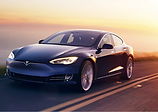The intensifying climate crisis has led to a surge in extreme weather events globally, with wildfires emerging as one of the most visible and destructive consequences. Whether it’s the scorched landscapes of California or the bushfires devastating Australia, the link between climate change and wildfires is undeniable. Understanding this intricate relationship is crucial for devising effective strategies to mitigate the impacts of both.
The Role of Climate Change
Rising temperatures, primarily driven by human-induced greenhouse gas emissions, create conditions conducive to wildfires. Elevated temperatures lead to increased evaporation, drying out vegetation and making it more prone to ignition. Furthermore, climate change disrupts traditional rainfall patterns, resulting in periods of drought followed by intense rainfall, known as the “fire-weather cycle.” These droughts parch the land, turning forests and grasslands into tinderboxes, while heavy rains can trigger rapid vegetation growth, providing ample fuel for future fires. Consequently, warmer temperatures also lengthen the fire season, allowing wildfires to occur more frequently and over a broader geographical area, straining firefighting resources and exacerbating the risk of large-scale, uncontrollable blazes.
Vegetation and Fuel
Climate change-induced droughts desiccate vegetation, turning lush forests and grasslands into highly flammable environments. This dry biomass serves as fuel for wildfires, facilitating their rapid spread and intensity. Additionally, climate change enables the migration of invasive plant species into new territories, further altering ecosystems and increasing wildfire risk. These non-native plants often outcompete native species, creating dense, highly combustible vegetation that fuels fires. Moreover, human interventions such as fire suppression and the suppression of natural fire regimes have led to the accumulation of flammable biomass in many ecosystems, exacerbating the intensity and severity of wildfires when they do occur.
Weather and Fire Behavior
Climate change intensifies weather extremes, including heatwaves, droughts, and strong winds, all of which can contribute to the ignition and rapid spread of wildfires. Strong winds can carry embers over long distances, igniting new fires and making containment efforts challenging. Additionally, intense wildfires can generate their weather systems, including pyrocumulus clouds, which form from the heat and moisture released by the fire. These clouds can produce thunderstorms and lightning, further complicating firefighting efforts and potentially igniting new blazes.
Human Factors
The expansion of urban areas into wildland-urban interface (WUI) zones increases the risk of wildfires, as human activities bring ignition sources closer to fire-prone environments. Furthermore, land use practices such as deforestation, agricultural expansion, and land development contribute to habitat fragmentation and the degradation of natural ecosystems, altering fire regimes and exacerbating wildfire risk. Poor land management practices can also increase the likelihood of ignition, such as improper disposal of flammable materials or equipment. In fact, according to Texas fire attorneys, corporate negligence and human factors are often the cause of wildfires igniting.
Impacts and Consequences
Wildfires have far-reaching ecological impacts, destroying habitats, endangering wildlife, and altering ecosystems. The loss of vegetation can lead to soil erosion, degraded water quality, and reduced biodiversity, exacerbating the long-term effects of climate change. Additionally, wildfires pose significant risks to human health and safety, both directly through smoke inhalation and respiratory problems and indirectly through the destruction of homes, infrastructure, and livelihoods. The economic toll of wildfires is substantial, encompassing firefighting efforts, property damage, healthcare costs, and lost revenue from tourism and agriculture. The increasing frequency and severity of wildfires place a strain on government budgets and emergency response resources.
The relationship between the climate crisis and wildfires is multifaceted, encompassing a complex interplay of environmental, ecological, and human factors. Addressing this growing threat requires a comprehensive approach that combines efforts to mitigate climate change, improve land management practices, and enhance wildfire preparedness and response capabilities. By understanding the intricate connections between climate change and wildfires, we can better protect our communities, ecosystems, and planet from the escalating impacts of the climate crisis.




